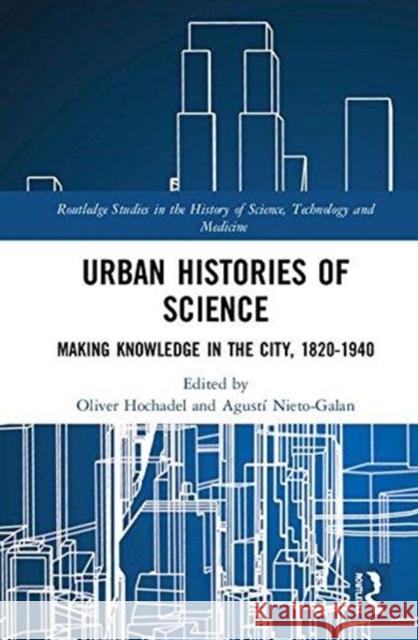Urban Histories of Science » książka
Urban Histories of Science
ISBN-13: 9780415784177 / Angielski / Twarda / 2018 / 192 str.
Urban Histories of Science
ISBN-13: 9780415784177 / Angielski / Twarda / 2018 / 192 str.
(netto: 674,98 VAT: 5%)
Najniższa cena z 30 dni: 654,86
ok. 22 dni roboczych.
Darmowa dostawa!
This book tells eleven Urban Histories of Science from nine cities - Athens, Barcelona, Budapest, Dublin, Glasgow, Helsinki, Lisbon, Naples and Buenos Aires - situated on the margins of Europe or even outside of it. With a focus on the time around the turn of the 20th century, it contains episodes dealing with astronomy and archaeology, zoology and geology, engineering, hygiene and city planning. Yet why delve into the scientific culture of cities, which are considered marginal in terms of their production in science, technology and medicine? This book turns the tables and shows what can only be learnt by studying the periphery. It is exactly the absence of celebrated academies of science and leading universities that enables historians to dig deeper into the urban culture of science. This book asks how scientific practices, debates and innovations are intertwined with the highly dynamic urban space around 1900. The authors analyze zoological gardens, research stations, observatories and international exhibitions, and also hospitals, panoramas, newspapers, back streets and private homes. They unfold the diversity of urban publics ranging from engineers, scientists and physicians to tuberculosis patients and fishermen. Looking at these nine cities is like glancing at a prism that produces different and even conflicting notions of modernity, torn between cosmopolitanism and the surge of nationalism, between aping the metropolis of London and Paris and insisting on their local identity. This book stresses the importance of concrete urban spaces for the production and appropriation of knowledge. What first may appear as mere variation or inferior copy of the metropolis emerges thus as a valuable object of study in its own right.











